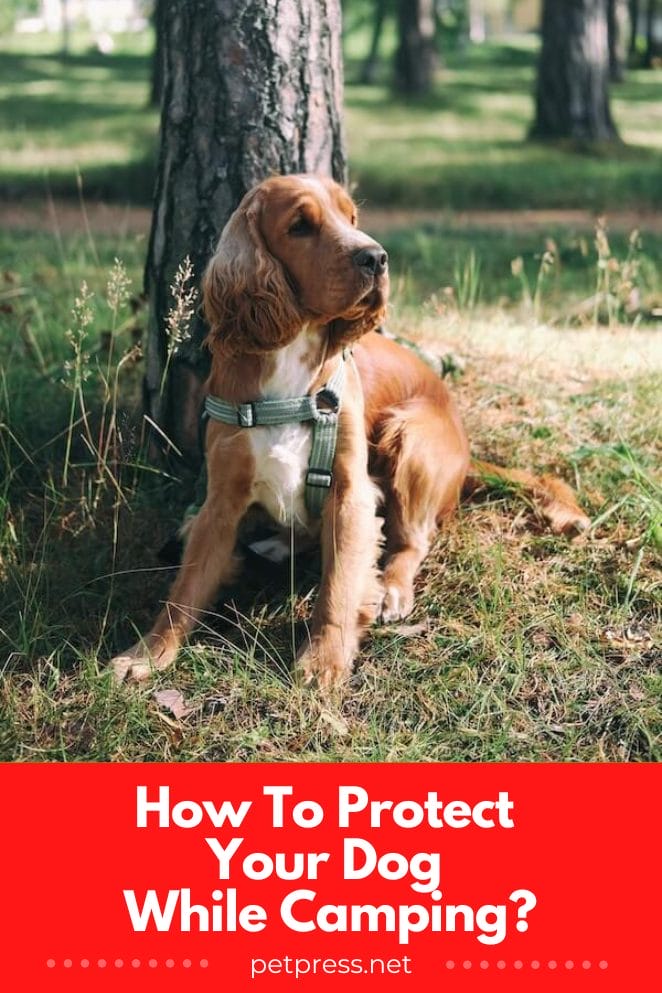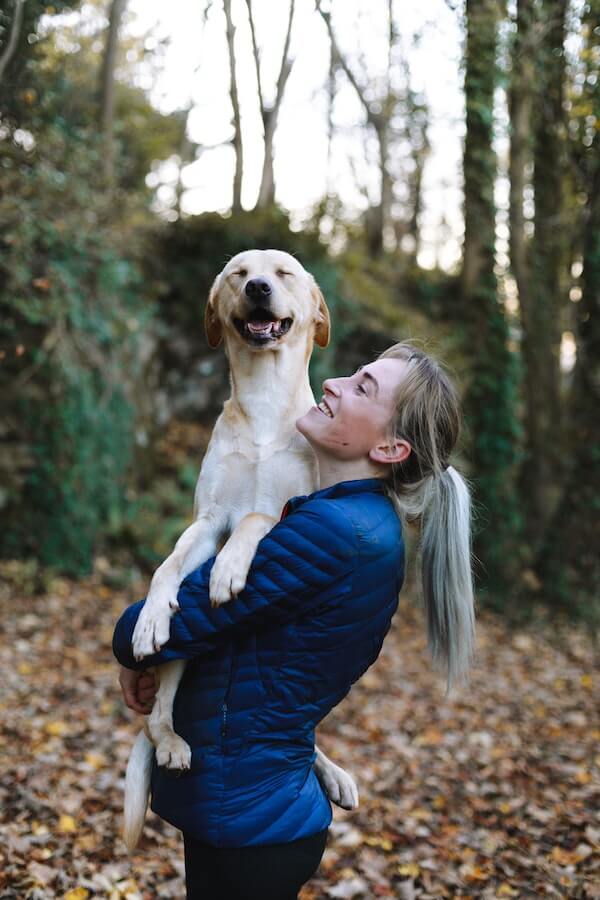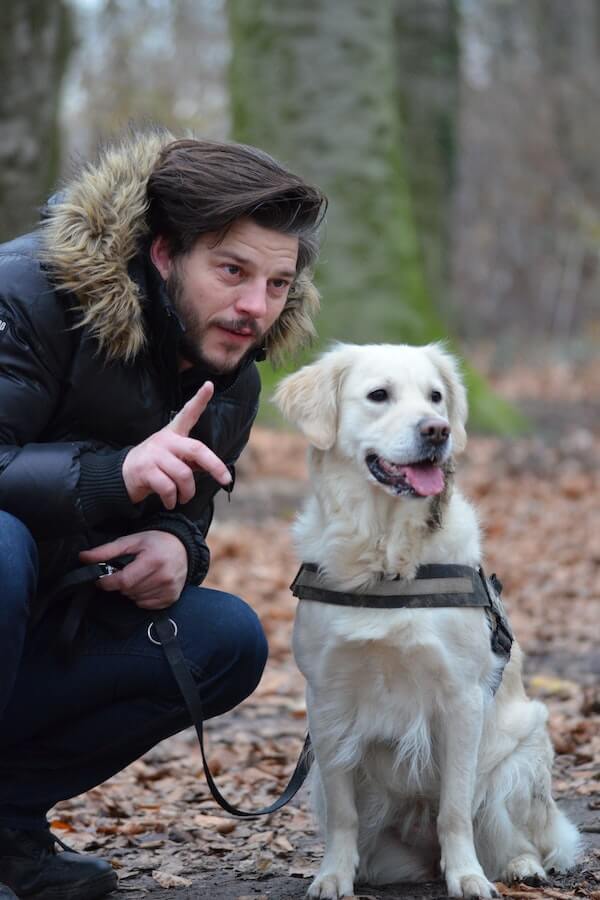
Are you ready to take your pup on the camping trip of a lifetime? But do you also ask yourself “How do I protect my dog while camping?” Fear not, savvy camper! We’ve got you covered.
When it comes to camping with your furry best friend, you naturally want to keep them safe and secure.
After all, there can be a lot of unfamiliar territory and potential danger while camping! While you may not be able to protect them from every possible hazard, learning how to protect your pup while camping is essential for their safety — and your peace of mind.
So, here are a few tips to keep your pup safe and secure while they’re roughing it with you!
How do I protect my dog while camping?
To ensure you enjoy your time out in nature, here are 10 tips to protect your pup while camping:
1. Keep Your Dog Leashed:
Despite being in a wild environment, it’s important that you keep your dog leashed while camping.
Not only will this help prevent them from getting lost, but it will also protect local wildlife and other campers.
2. Keep them hydrated:
Dogs need to be well-hydrated outdoors, so don’t forget to bring extra water for your pup while you are out in nature.
Plan ahead and pack collapsible water dishes so you can easily provide drinking water for your pet on the go.
3. Bring along food:
When packing up for a camping trip, make sure to include enough food for both you and your pup. It’s also important to remember that some dogs may not have access to their normal diet while out in the wilderness.
To avoid any digestive upset, consider bringing along supplements or special food for your pup so that they can stay healthy on the trip.
4. Plan ahead:
Research the area you are going camping in advance and make sure it is open to dogs before arriving with your pet.
Prepare yourself by planning out a safe route for hikes, knowing what plants are poisonous to pets, and having a first aid kit with supplies just in case of an emergency.
5. Make sure they have ID tags:
In case your dog gets lost on the trail, make sure they are wearing a collar and ID tags with your current contact information.
You can also get them microchipped so that if they do get lost, a vet or animal shelter will have an easier time identifying and locating the owner.

6. Stick to familiar trails:
When exploring with your pup, stick to trails you are both familiar with rather than venturing off into completely unknown areas.
This will help reduce the chances of getting lost or confused in unfamiliar territory.
7. Protect their feet:
For longer hikes, consider using booties for your dog’s paws to protect them from hot surfaces and sharp objects like rocks and sticks.
It’s also important to check their paws regularly for any cuts or irritations that may occur during the walk.
8. Keep them on a schedule:
Just like humans, dogs need regular meals and sleep in order to stay healthy and energized.
Try to stick to their normal feeding times and sleeping schedule as much as possible while out camping so that they can enjoy the trip along with you.
9. Provide a safe space:
When it comes time for bed, make sure your pup has their own comfortable space in the tent or camper van where they can relax without being disturbed by other campers or wildlife.
This will ensure they get enough rest before the next day’s adventures!
10. Check the Area for Potential Dangers:
The first step in keeping your dog safe is making sure the environment around you is free of any potential hazards.
Make sure to check for plants like poison ivy and oak, dangerous wildlife, and areas with fast-moving water or sharp rocks that could cause harm.

11. Watch Your Dog Around Food Sources:
Most campsites have food sources like campfires, barbecues, or open garbage bins that can be enticing to curious pets.
Keep an eye on them while these are in use or covered up securely when not in use.
12. Give Your Dog Time To Adjust:
Dogs may take a little longer than humans to adjust to their new environment when camping, so make sure to give them plenty of time and attention as they explore and get comfortable with their surroundings.
13. Monitor Your Dog’s Health:
Just like humans, dogs need regular check-ups with the vet to make sure they are healthy and fit enough to go camping.
Also be sure to watch for signs of heat exhaustion or illness during your trip, as these can be dangerous if not addressed quickly.
14. Don’t Leave Them Unattended:
It’s never a good idea to leave your pup alone while camping, so make sure they are always supervised when exploring or interacting with other campers.
This will help ensure their safety and reduce the chances of any accidents occurring.
15. Take Breaks:
Don’t forget to take some breaks from hiking and exploring to just sit back and enjoy some quality time with your pup.
This is a great opportunity to strengthen the bond between you and your beloved four-legged friend, so don’t be afraid to take advantage of it!

Conclusion
In conclusion, bringing your pup camping can be a great experience for the whole family. However, it requires taking some extra precautions to ensure that your furry friend is safe and comfortable.
Have a plan in place before you set off on your adventure and do not forget to bring all of the necessary supplies such as water, food, and blankets.
If you follow these tips then there’s no doubt that both you and your pup will have an amazing time!


GIPHY App Key not set. Please check settings